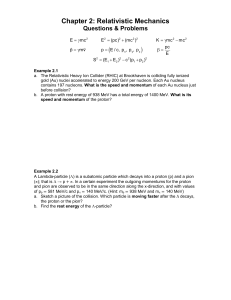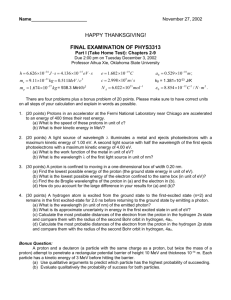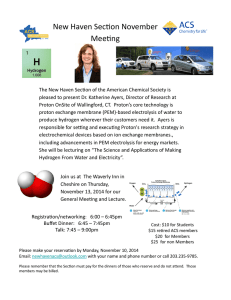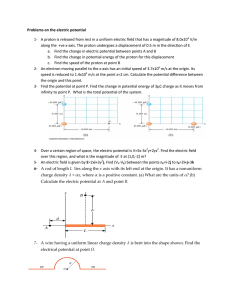1. Two particles are observed to emerge from a nuclear interaction
advertisement
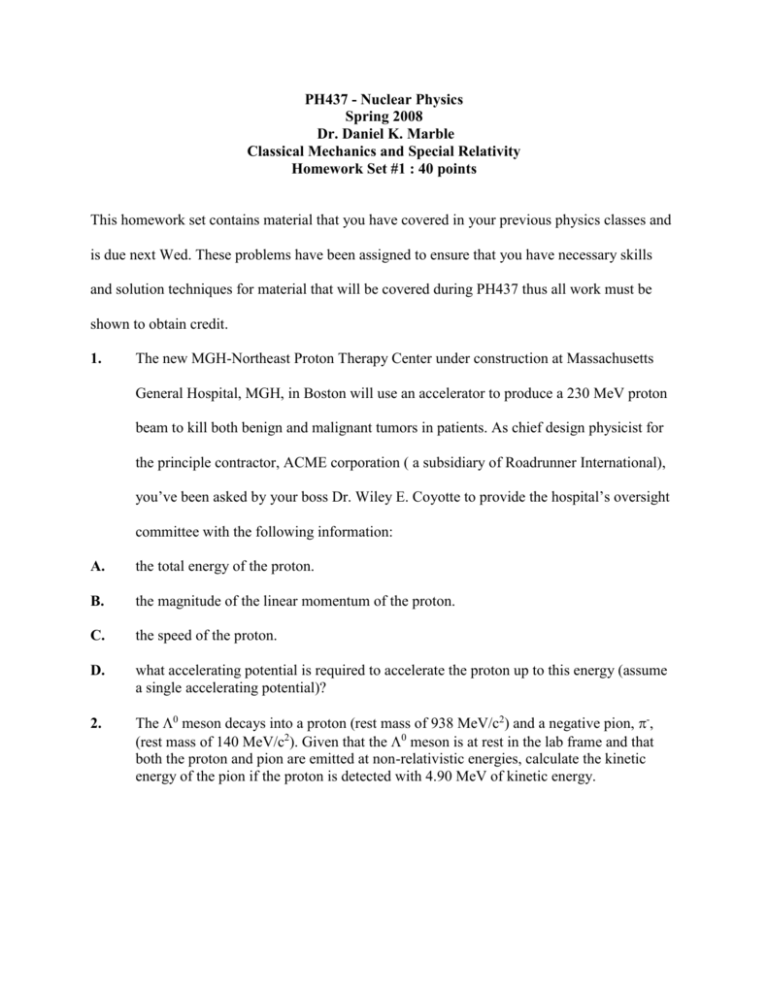
PH437 - Nuclear Physics Spring 2008 Dr. Daniel K. Marble Classical Mechanics and Special Relativity Homework Set #1 : 40 points This homework set contains material that you have covered in your previous physics classes and is due next Wed. These problems have been assigned to ensure that you have necessary skills and solution techniques for material that will be covered during PH437 thus all work must be shown to obtain credit. 1. The new MGH-Northeast Proton Therapy Center under construction at Massachusetts General Hospital, MGH, in Boston will use an accelerator to produce a 230 MeV proton beam to kill both benign and malignant tumors in patients. As chief design physicist for the principle contractor, ACME corporation ( a subsidiary of Roadrunner International), you’ve been asked by your boss Dr. Wiley E. Coyotte to provide the hospital’s oversight committee with the following information: A. the total energy of the proton. B. the magnitude of the linear momentum of the proton. C. the speed of the proton. D. what accelerating potential is required to accelerate the proton up to this energy (assume a single accelerating potential)? 2. The 0 meson decays into a proton (rest mass of 938 MeV/c2) and a negative pion, -, (rest mass of 140 MeV/c2). Given that the 0 meson is at rest in the lab frame and that both the proton and pion are emitted at non-relativistic energies, calculate the kinetic energy of the pion if the proton is detected with 4.90 MeV of kinetic energy. 3. Two particles are observed to emerge from a nuclear interaction with velocities at right angles to each other. Each particle has a rest mass of 2.00 GeV/c2 and a linear momentum of magnitude 1.00 GeV/c. It is hypothesized that the two particles are the only decay products of a single short-lived particle. Calculate the rest mass of the parent particle. P1 P2 4. When protons and neutrons are combined to form a nucleus, mass is converted to energy in order to bind the nucleons together (binding energy). Thus, the resultant nucleus has less mass than the original nucleons and the difference in mass is called the “mass defect.” Calculate the mass defect, and then use Einstein’s mass-energy equivalence relation to calculate the binding energy for the following two nuclei (Hint: See Beiser pg 397 or Das and Ferbel pp 29-30): a) 39Ca atomic mass: 38.970718 u b) 39K atomic mass: 38.963707 u


